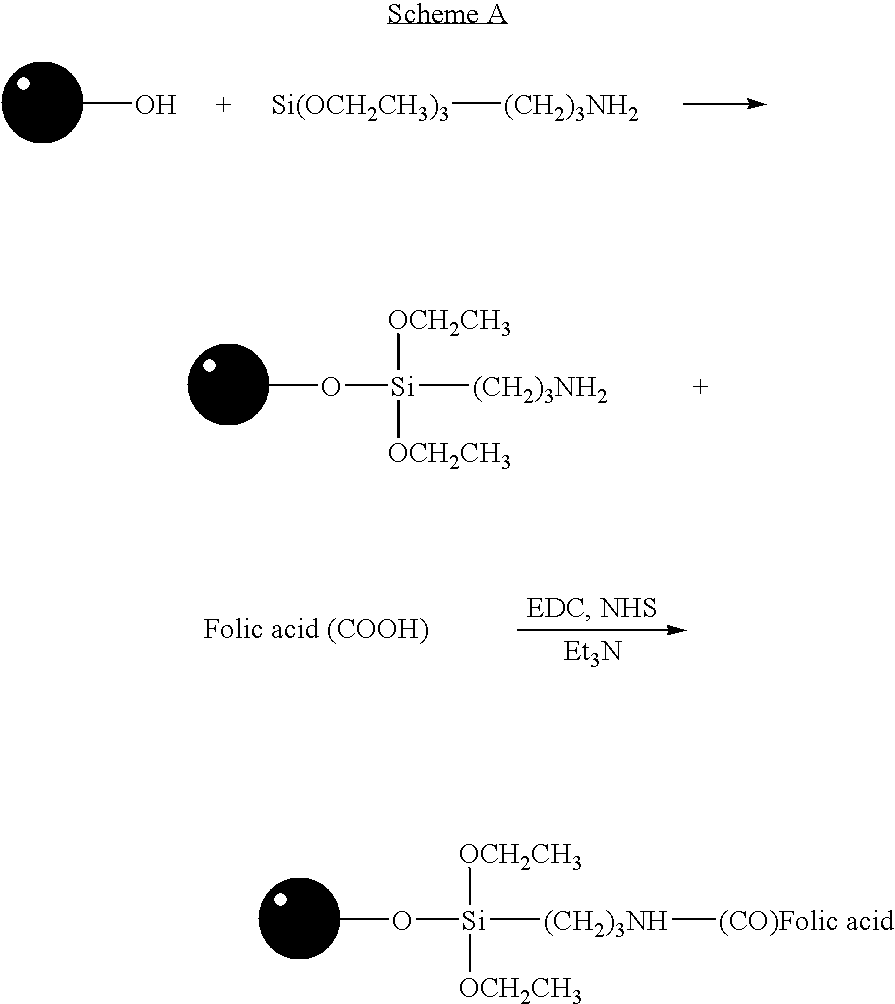Microparticle-based diagnostic methods
a technology of microparticles and diagnostic methods, applied in the direction of instruments, biochemical equipment and processes, material analysis, etc., can solve the problems of oral cancer and its lack of early detection, low detection accuracy, and low long-term survival rate, so as to facilitate and accurately detect the surface changes
- Summary
- Abstract
- Description
- Claims
- Application Information
AI Technical Summary
Benefits of technology
Problems solved by technology
Method used
Image
Examples
example 1
Home Test Kit
[0062]One embodiment of the present invention involves a kit for a home based test for oral cancer. Optionally, the kit can be administered in a clinical setting such as a physician's or a dentist's office. The kit contains two marked vials each holding a mouthwash—one mouthwash with the first set of folate-modified and unmodified microspheres and one mouthwash with the just an acidic solution—and an empty collection container. The accompanying directions instruct the consumer or test administrator to rinse the oral cavity with the mouthwash containing the first set of microspheres for a sufficient amount of time to ensure complete contact between the mucosal surface and the mouthwash followed by disposal of the expectorated mouthwash. Subsequently, the mucosa should be exposed to the second mouthwash, and the resulting expectorate stored in the collection container and sealed. The collection container can then be submitted to a qualified laboratory for analysis of the ...
example 2
Method of Use
[0063]Microspheres prepared in accordance with the subject invention can be incorporated into a liquid suspension, which can be used as a, for example, a mouthwash delivery system for oral mucosa. Preferably, the properties of this suspension include the ability to prevent significant settling of the heavier particles (less that 25%) over 30 seconds after stirring, but the compositions can simply use microspheres in pH 7.4 phosphate buffered saline (PBS) or culture media.
[0064]In one example, a few cubic millimeters of biopsy tissue is placed in a polyethylene 5 mL centrifuge tube, containing PBS, and a mixture of the two microsphere populations (folate surface with dye “A” and non-folate surface with dye “B”). The tubes are gently shaken for one minute in an automated shaker, and then removed for extraction of microspheres by filtering the PBS mixture through filters with porosity greater than 100 micrometers, or simply removing the tissue with forceps. This removes an...
example 3
Attachment of Folic Acid
[0065]Folic acid can be attached to the surface of the microspheres by means of a technique described by Zhang et al. (Zhang, Y, N. Kohler, & M. Zhang “Surface modification of superparamagnetic magnetite nanoparticles and their intracellular uptake.”Biomaterials, 2002 April; 23 (7): 1553-61.) The mechanism for attachment of folic acid onto microspheres is shown in Scheme A.
[0066]
[0067]Dried particles are dispersed in 3 mM (3-aminopropyl)-trimethoxysilane in 5 ml toluene, vortexed and sonicated, then incubated at 60° C. for 4 hours. The product is centrifuged, and the precipitate is placed in hexane and sonicated for 10 minutes, then washed with hexane and ethanol. A solution is made of 1.5 ml each of 15 mM NHS (N-hydroxy succinimide) and 75 mM EDC (1-ethyl-3-(3-dimethylamino-propyl) carbodiimide) and 1 ml 10 mM folic acid in DMSO, to which the precipitate is added, and ethylene triamine used as a catalyst. The pH is adjusted to 9 and the mixture incubated at ...
PUM
| Property | Measurement | Unit |
|---|---|---|
| size | aaaaa | aaaaa |
| particle size | aaaaa | aaaaa |
| particle size | aaaaa | aaaaa |
Abstract
Description
Claims
Application Information
 Login to View More
Login to View More - R&D
- Intellectual Property
- Life Sciences
- Materials
- Tech Scout
- Unparalleled Data Quality
- Higher Quality Content
- 60% Fewer Hallucinations
Browse by: Latest US Patents, China's latest patents, Technical Efficacy Thesaurus, Application Domain, Technology Topic, Popular Technical Reports.
© 2025 PatSnap. All rights reserved.Legal|Privacy policy|Modern Slavery Act Transparency Statement|Sitemap|About US| Contact US: help@patsnap.com


